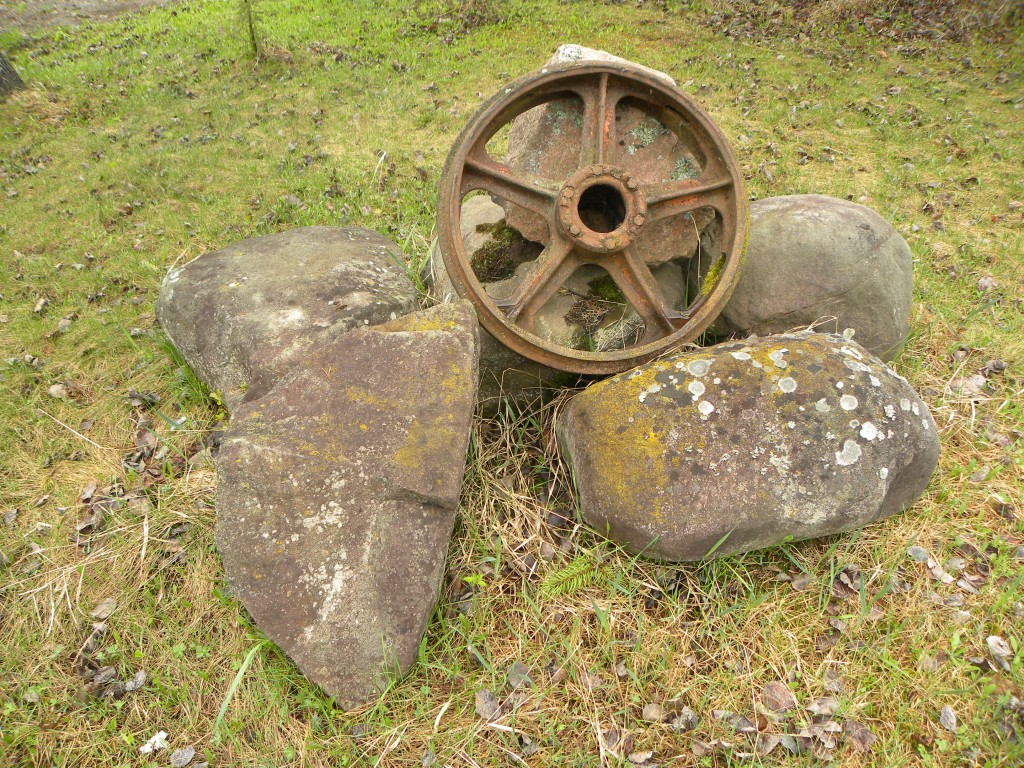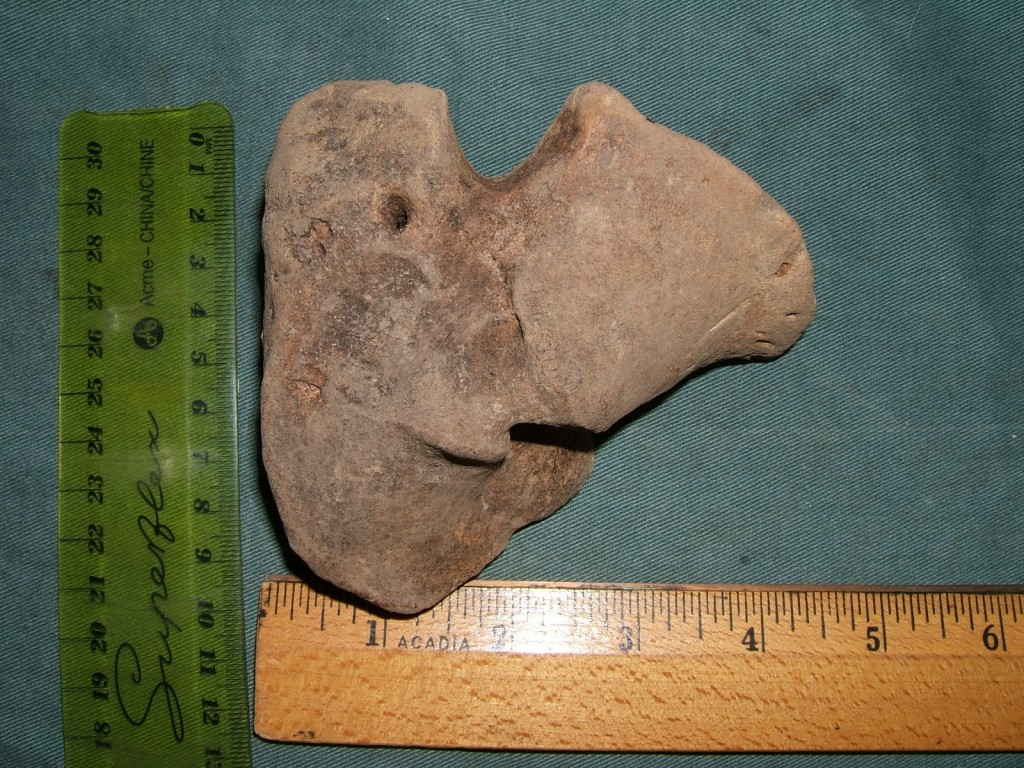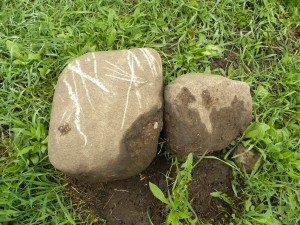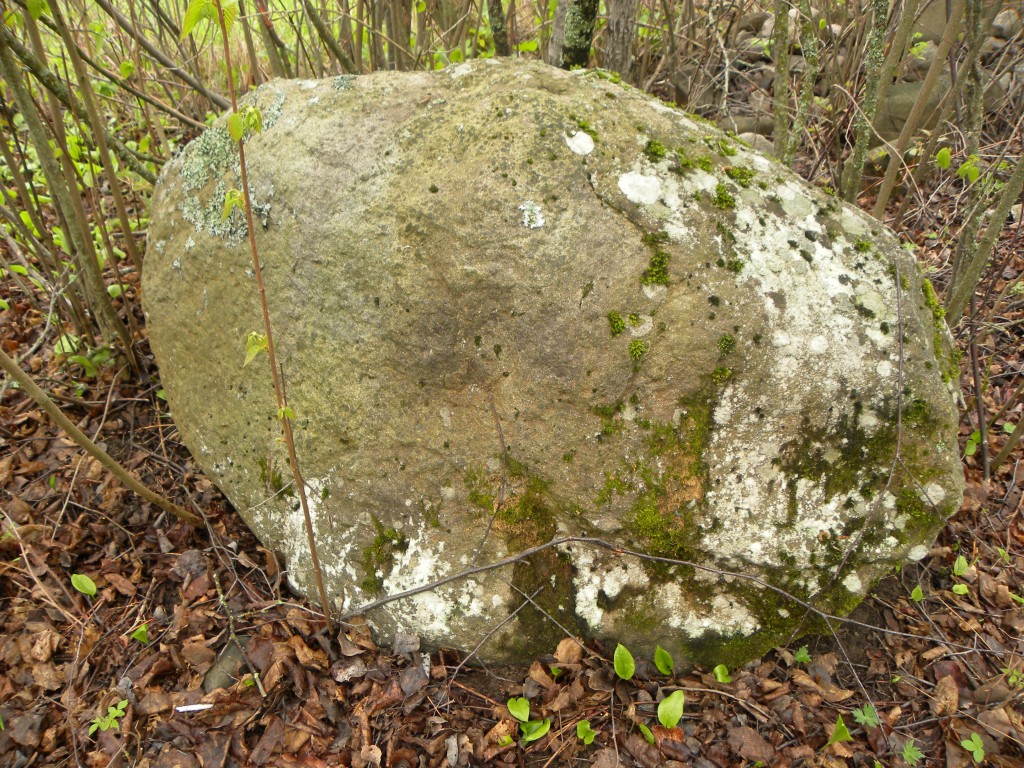









© 2013 Raymond Alexander Kukkee

Garden Rocks of the Past
"Big Stones Grow in Ontario"
In the gardening life, when the new growing season finally rolls around, loyal growers of vegetables working hard at tilling the dark earth never know quite what to expect. Gardening is discovery. It's a given that some fortunate gardening types have discovered lovely, rich organic soil in the back yard, a foot or more deep with nary a stone in sight.
Others have discovered converted gravel pits. Have you ever seen signs, "Clean fill wanted" on undeveloped lots? They get it free, 'clean fill with boulders, old cement blocks, bricks and assorted trash, you get the idea. Surprises for the new homeowner/gardener.
Yet other folks have discovered bone-dry, brick-hard clay, not easy to till, and it grows flat potatoes. In the annual spring ritual, some lucky stiffs have even found dirt-encrusted diamonds, gold nuggets, old fishing lures, the odd old skull, or even older mason jars full of cash. It's called gardening.
We, on the other hand, discovered stones. In times past, long ago- we discovered we are blessed with a quasi-usable offering of heavy dirt containing clay, loam, and a mundane collection of very ordinary stones of various ages and sizes. Glacial till might best describe it. No diamonds or gold nuggets here. Perhaps the odd tiny piece of quartz, or bloodstone,-- those can be exciting, but no, most are ordinary rocks. That flash of red was a wrinkled beet I missed last year. Sprouting already. No matter, it's another 'good earth' garden discovery in the weedery.
Perhaps that top layer, enriched by a few centuries of grass, leaf mold and forest duff -extends down 6" or 8" in our garden if we're lucky. In Northwestern Ontario, the local topsoil --the best stuff--supposedly went down south with the glaciers. Underneath our remaining topsoil there is a layer of clay, two feet thick or more, with a hardpan layer beneath that-- so hard it
tests the patience of a pick-axe. The stuff is hard. It looks like concrete. Well, okay, not quite, it's brown, but so what, it's got just as many assorted pebbles in it and gravel bits, you name it.
Beneath all of that exciting stuff is an undetermined thickness of
beach silt casting sand
so fine somebody might be tempted to cast bronze bells with it, but we haven't found anyone clever enough to buy it yet
. Besides, we're holding out for surprises, we're gardeners.
"What's that," you ask, " What kind of surprises?" Yes, well,
bones. Unidentified bone, remember?
The bone nobody could identify, relaxing in cool, damp, pink clay for centuries, undisturbed, perfectly sealed and protected. Until I dug it out, that is.
That was an
interesting surprise. See?

Two Stones
Then there are stones. Big ones. Two stones.
Two new ones this year, that is. They keep appearing out of nowhere. For a garden that's been in the same spot for 30 years with the stony soil turned and cultivated annually, one would think all of the stones should have been found, or migrated into handy rock piles on the sidelines somehow by now. Some softer types may may be turned into sand by the aging rototiller, which hates stones, -but that's another story. Regardless, they should be gone by now, discovered by the weeder's hoe, shovel, or unfortunate toe ---but no.
These are intact, dedicated rocks, hard, stubborn rocks that apparently were too big to wash up on ancient beaches and rolled back into the garden wannabe backwash sediment and stayed there, lurking. Until we came along to garden, that is, a gazillion centuries later after the ancient lakes disappeared.

Two NEW garden stones
went flying, and we don't have to wonder why, the poor old teeth hit huge stones.
Two stones. A hundred+-pounder and a relative baby, perhaps sixty pounds of sub-rounded, field-smooth greywhacke -- heavier than I care to have to lift out of a hole.
"How come there are still stones in your garden? " casual observers ask. "
How is that possible?" "Why didn't you just take the stones out of your garden in the first place?" They ask innocently, smirking with devious intent.
"I do, " I say, "every year, see this one?" politely refraining from whacking the inquisitor upside the head with my long-handled shovel. "They grow, like magic mushrooms" I explain.
"They grow faster than potatoes, just below the surface of the soil, and lurk there like icebergs, waiting to attack my cultivator." Sometimes the curious even believe me. Maybe. They scratch their heads in wonder.
If they turn out to be non-believers, I try the birds and the bees approach for comic relief.
"Two stones or more procreate, hatching pebbles and small stones in endless generations of gravel and rocks" .
They look at me strangely, exchange knowing glances, and try to escape to Timmy's for coffee, leaving me mumbling to myself. I offer them a shovel. "
Let's not get too carried away, that looks like work." I hear one laughing as they leave.
The real question is, "where did those big stones really come from?" might have occurred to genuinely interested and even inquisitive coffee-drinkers. Every wise gardener knows
visitors they show up unannounced.
The stones, I mean. Uh, huh. The fact is, much to the dismay of cultivators, gardeners and disbelievers all, Jack Frost heaves them up, a little bit every year, one at a time, two stones at a time, or dozens annually, like it or not.
I resign myself to the unnecessary ways of Jack Frost and get back on the shovel. Not leaning on it, but genuine digging. That's a given if I want any teeth left on the antique cultivator next season..... I dig'em out, the stones, I mean, there's no stopping me, gardeners are brave
and persistent. I think better of it and go have coffee first.

Original Garden Rock--Several tons-Removed from the same garden plot
to get huge stones out of a hole in your garden, hundred-pound brutes or bigger. Even
thousand pound beasts. I'll fill you in on that technique, you can find that
here. Let's say you have two stones to work with. Big ones. Anyone can lift pebbles out of the garden, but to get big, clay-covered, slick, wet and rounded rocks out of a hole? That takes some work...but it's amazingly simple.
You'll see that it's a good idea to dig them out before they get any bigger.
Is that incoming I hear?
#
Photos © r.a.kukkee
+










Post Views: 170






playing with rocks again? i did not see any reference to adopting the pet rock..yes, incorporating it in the garden design..why not use it as a prop for protective shelter, celery would love it, nasturtium would climb it, visitors would be puzzled by it–mystery rock, and don’t forget potential companions, the other rock babies you find each year; for a sage and verbena, thyme and rue spot of herbal interest, a virtual pest control station!..always a pleasure gardening with you.
Hi Nadine, it’s always fascinating to hear YOUR take and brilliant ideas on these things. Yes, rocks are individuals like people too, they need to be loved and used for many creative things. I’ve never met a rock I didn’t like. “:) I like rocks for landscaping, herb gardens, and observation points for gnomes, trolls, and garden fairies. Nasturtiums LOVE rocks. Interestingly, a big rock holds heat overnight too, which can help growth! We’re always playing with rocks, they make fine fences, even the rocks that don’t like celery….haha, we’re always trying to increase the collection. Do you have any rocks? I’ll save some for you…… “:) Happy gardening, my friend!